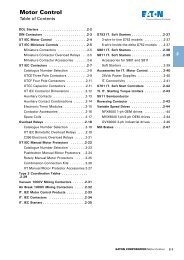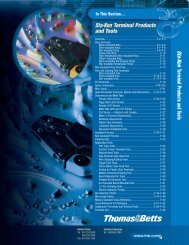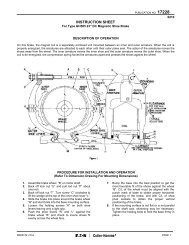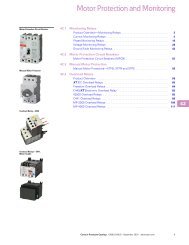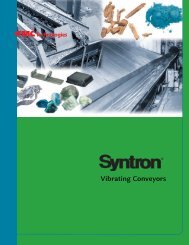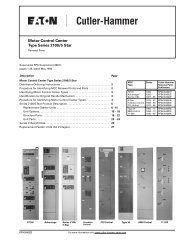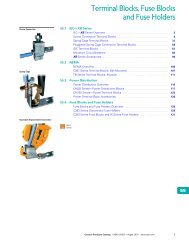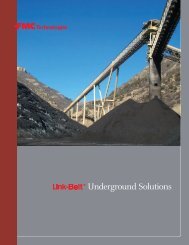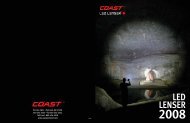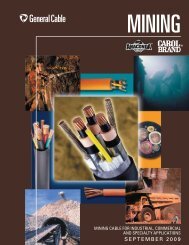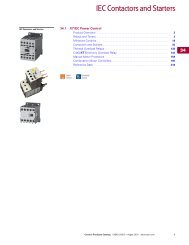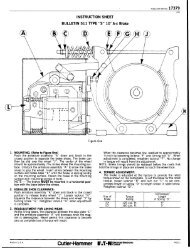Syntron® Electromagnetic Feeders - FMC Technologies
Syntron® Electromagnetic Feeders - FMC Technologies
Syntron® Electromagnetic Feeders - FMC Technologies
You also want an ePaper? Increase the reach of your titles
YUMPU automatically turns print PDFs into web optimized ePapers that Google loves.
Recommended InstallationRecommended Designs for Hoppers and TransitionsFeeder Transition HoppersFeeder capacity depends on the design of the hopper. Material characteristicssuch as size distribution, shear properties and cohesiveness generallydictate the configuration of feeder transition hoppers. Material flowvelocities vary, depending upon material properties, feeder stroke andoperating speed.Good transition hopper design optimizes flow rate, resulting in the mosteconomical choice of a feeder. Improperly designed transition hoppers willsubstantially reduce feeder capacities.Figure 1 illustrates Ideal and Acceptable Hopper designs.The Ideal Hopperwith a throat (T) to gate height (H) ratio of 0.6 shows a uniform materialflow pattern to the feeder trough. Material at the front and rear of thehopper moves at nearly the same velocity, and the discharge depth (d) isnearly equal to the hopper gate height. The Ideal Hopper design allows themost economical feeder to be used.The Acceptable Hopper design may require a slightly larger feeder thanrequired for the Ideal Hopper design. This is due to the non-uniform flowpattern of material at the rear of the hopper. Material flow velocity isreduced, material depth “d” is reduced and there is a reduction in feedercapacity. A T/H ratio of 0.6 to 1.0 is generally acceptable. However, whenthe T/H ratio exceeds this range, the material flow patterns distortdrastically and will significantly reduce capacities.T = ThroatGF = Gate FactorH = Gate Height Opening R = Flow Rate (ft/min) ◆ See ChartC = CapacityW = Feeder Width (inches)d = Depth of Flow at DischargeCapacity (tons per hour) x 4800d (in) =[W (in) - 4 (in)] x R (ft/min) x D (lb/ft 3 )C (tph) =[W (in) - 4 (in)] x R (ft/min) x D (lb/ft 3 ) x d (in)4800H (in) = GF x d (in)◆ Flow Rate - R (ft/min)Suggested <strong>Electromagnetic</strong> SizeIf material size is -4-in with a trough down slope of up to 10˚, use 30-40 ft/min.If material size is +4-in to -12-in with a trough down slope of up to 10˚, use 25-30 ft/min.If material size is +12-in with a trough down slope of up to 10˚, use 20-30 ft/min.Suggested Electromechanical SizeIf material size is -4-in with a trough down slope of up to 10˚, use 50-60 ft/min.If material size is +4-in to -12-in with a trough down slope of up to 10˚, use 45-55 ft/min.If material size is +12-in with a trough down slope of up to 10˚, use 40-50 ft/min.Figure 1. Hopper DesignIdeal Hopper Promotes:■ Uniform flow pattern■ Maximum capacity■ Maximum material velocity■ Maximum material depth■ Optimized feeder size■ Reduced potential for material buildupat inlet■ Reduced potential for spillage at backand sides■ Reduced material load on feederFeeder down slope usually effects flow rate by 2% per degree. As down slopeincreases flow rate increases. As down slope decreases flow rate decreases.30



